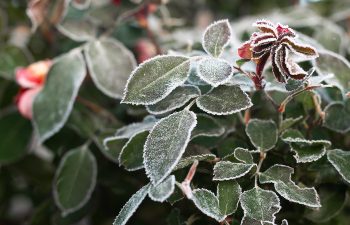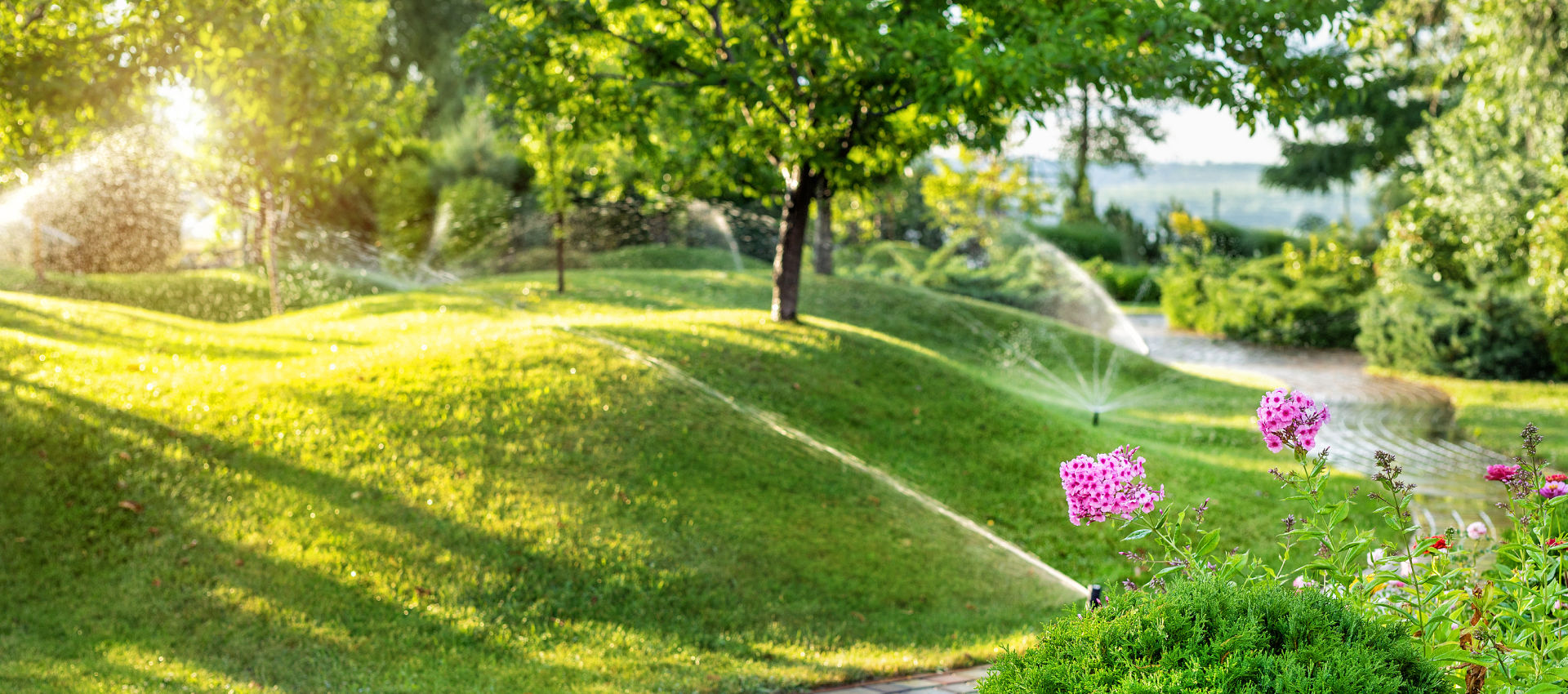
North Georgia’s climate has become increasingly unpredictable, with intense summer storms, prolonged droughts, and unexpected temperature swings becoming the new normal. Your Cumming, Suwanee, or Johns Creek landscape needs to be ready for whatever Mother Nature throws at it.
Creating a weather-resilient landscape isn’t just about surviving the next storm – it’s about protecting your property investment while maintaining the beautiful outdoor spaces that North Metro Atlanta homeowners love. These five strategic steps will help you build a landscape that thrives through Georgia’s most challenging weather conditions.
Step 1: Assess and Upgrade Your Drainage Infrastructure
Start with a comprehensive water flow evaluation
The foundation of weather-resistant landscaping begins underground with proper drainage systems. Georgia’s clay-heavy soil and intense summer thunderstorms create the perfect storm for water damage if your property isn’t prepared.
What to look for during your assessment:
- Surface Water Patterns: Walk your property during and after heavy rain to identify where water pools or flows toward your home
- Soil Saturation Zones: Mark areas where water stands for more than 24 hours after storms
- Foundation Vulnerabilities: Check for water stains, settling, or moisture issues around your home’s perimeter
- Existing Drainage Performance: Evaluate current systems like gutters, downspouts, and any installed drains
Essential drainage upgrades for North Georgia properties:
- French Drain Systems: Install along property lines and near foundations to redirect groundwater away from structures
- Catch Basins: Place strategically in low-lying areas to collect and channel storm water
- Dry Creek Beds: Create attractive landscape features that double as emergency water channels during heavy rainfall
- Permeable Surfaces: Replace traditional hardscaping with materials that allow water infiltration
The investment in proper drainage infrastructure pays for itself by preventing costly water damage and creating a landscape that actually improves during heavy rain events.
Step 2: Choose Climate-Adaptive Plant Varieties
Select plants that handle Georgia’s weather extremes
Native and climate-adapted plants form the backbone of resilient landscaping. These varieties have evolved to handle Georgia’s hot summers, occasional droughts, and sudden temperature drops that can stress non-native species.
Top weather-resistant plants for the Cumming area:
- Native Trees: Southern Live Oak, Red Oak, and Bald Cypress provide strong root systems and storm resistance
- Drought-Tolerant Shrubs: Abelia, Nandina, and native Azaleas require less water while maintaining year-round appeal
- Perennial Groundcovers: Liriope, Mondo Grass, and native ferns create low-maintenance coverage that survives temperature swings
- Ornamental Grasses: Fountain Grass and native sedges add texture while requiring minimal water once established
Strategic plant placement principles:
- Wind Barriers: Position larger shrubs and trees to protect more delicate plants from storm winds
- Microclimates: Create protected areas using existing structures and natural terrain features
- Water-Wise Zoning: Group plants with similar water needs to optimize irrigation efficiency
- Seasonal Succession: Plan for year-round interest with plants that peak at different times
Remember that even native plants need establishment care during their first growing season, but once mature, they’ll outperform exotic varieties during extreme weather events.
Step 3: Install Smart Irrigation Technology
Modernize your watering systems for efficiency and protection
Traditional irrigation systems waste water and can’t adapt to Georgia’s unpredictable rainfall patterns. Smart irrigation technology helps your landscape survive droughts while preventing overwatering during wet periods.
Essential smart irrigation components:
- Weather-Sensing Controllers: Automatically adjust watering schedules based on local weather data and soil moisture levels
- Zone-Specific Programming: Different areas of your landscape receive precisely the amount of water they need
- Moisture Sensors: Prevent irrigation cycles when soil already has adequate water content
- Rain Delay Systems: Temporarily suspend watering during and after precipitation events
Implementation strategy for North Metro Atlanta properties:
- Phase Installation: Start with high-priority areas like newly planted landscapes and expensive plant investments
- Professional Calibration: Ensure sensors and controllers are properly configured for Georgia’s clay soil and local weather patterns
- Seasonal Adjustments: Program different watering schedules for summer heat stress and winter dormancy periods
- Backup Planning: Include manual override capabilities for emergency watering during system maintenance
Smart irrigation systems typically reduce water usage by 30-50% while keeping landscapes healthier during both drought and flood conditions.
Step 4: Strengthen Hardscape Elements and Structures
Build outdoor features that withstand severe weather
Your landscape’s hardscape elements – patios, walkways, retaining walls, and outdoor structures – must be engineered to handle Georgia’s weather extremes. Proper construction now prevents costly repairs and safety hazards later.
Critical hardscape considerations:
- Foundation Depth: Ensure all structures extend below Georgia’s frost line to prevent freeze-thaw damage
- Drainage Integration: Design hardscapes to complement your property’s water management system
- Material Selection: Choose weather-resistant materials appropriate for North Georgia’s climate conditions
- Expansion Management: Include appropriate joints and flexibility to handle temperature-related expansion and contraction
Weather-specific hardscape strategies:
- Storm-Resistant Fencing: Install panels and posts designed to flex with wind rather than breaking under pressure
- Permeable Walkways: Use materials that allow water infiltration while providing stable walking surfaces
- Reinforced Retaining Walls: Design walls with proper drainage backing to prevent water pressure buildup
- Protected Outdoor Living Spaces: Position patios and outdoor kitchens to take advantage of natural windbreaks and drainage patterns
Fire feature safety upgrades:
- Proper Clearances: Maintain adequate distance from structures and vegetation as required by local fire codes
- Emergency Shutoffs: Install easily accessible gas shutoffs and water connections for safety during extreme weather
- Wind-Resistant Designs: Choose fire pit styles and locations that perform safely during windy conditions
Well-designed hardscapes actually improve during storms, channeling water appropriately while providing stable surfaces for landscape maintenance and emergency access.
Step 5: Develop a Seasonal Maintenance and Monitoring Plan
Create systems for ongoing landscape resilience
Weather-resistant landscaping requires proactive maintenance timed to Georgia’s seasonal patterns. A strategic maintenance schedule prevents small problems from becoming major failures during extreme weather events.
Spring preparation checklist:
- Drainage System Inspection: Clear debris from drains, check for winter damage, and test all water flow systems
- Irrigation Startup: Activate and calibrate smart irrigation systems after winter shutdown
- Plant Health Assessment: Identify winter damage, plan replacement schedules, and begin fertilization programs
- Hardscape Maintenance: Inspect and repair any freeze-thaw damage to prevent further deterioration
Summer monitoring priorities:
- Drought Stress Management: Adjust irrigation schedules and provide supplemental care to stressed plants
- Storm Damage Prevention: Remove dead branches, secure loose elements, and maintain clear drainage channels
- Pest and Disease Vigilance: Hot, humid conditions require active monitoring and treatment of plant health issues
- Heat Stress Mitigation: Provide temporary shade and extra water to vulnerable landscape areas
Fall weatherization tasks:
- Winter Preparation: Gradually reduce irrigation, complete final fertilization, and prepare tender plants for cold weather
- Leaf Management: Remove excess organic matter from drainage systems while using appropriate amounts as natural mulch
- System Winterization: Properly shut down and protect irrigation systems from freeze damage
- Emergency Preparedness: Stock supplies for quick storm damage response and create emergency contact lists
Year-round monitoring strategies:
- Monthly Drainage Checks: Walk property boundaries and drainage features to identify potential problems early
- Seasonal Photography: Document landscape changes to track long-term health and performance trends
- Professional Inspections: Schedule annual assessments of major systems like irrigation and structural elements
- Weather Tracking: Use local weather services to anticipate extreme conditions and prepare accordingly
Protecting Your Investment in Cumming’s Changing Climate
Creating a weather-resilient landscape requires upfront planning and investment, but the long-term benefits extend far beyond storm survival. Property values in the North Metro Atlanta area increasingly favor homes with sustainable, low-maintenance landscapes that enhance rather than drain household resources.
The strategies outlined in these five steps work together as an integrated system. Proper drainage supports healthy plant growth, smart irrigation conserves resources while maintaining beauty, strong hardscapes provide stability and function, and proactive maintenance keeps everything performing optimally year after year.
Professional Implementation Makes the Difference
While some weather-preparation tasks can be handled as DIY projects, the most critical elements – drainage systems, irrigation technology, and major hardscape work – benefit significantly from professional expertise. Local knowledge of Georgia’s soil conditions, climate patterns, and building requirements ensures your landscape improvements perform as intended.
At Pannone’s Lawn Pros & Landscaping, we’ve helped Cumming, Suwanee, and Johns Creek homeowners create beautiful, resilient landscapes for over a decade. Our experience with North Georgia’s unique challenges means we can design and install systems that protect your property while enhancing your outdoor living experience.
Start Building Weather Resilience Today
Don’t wait for the next severe weather event to expose vulnerabilities in your landscape. These five steps represent a comprehensive approach to landscape resilience that protects your property investment while creating outdoor spaces you’ll enjoy for years to come.
Ready to weatherproof your North Metro Atlanta landscape? Contact Pannone’s Lawn Pros & Landscaping at (678) 294-0351 for a comprehensive assessment and customized resilience plan that works with Georgia’s challenging climate conditions.
Posted on behalf of
1444 Buford Hwy
Cumming, GA 30041
Phone: (678) 294-0351
Email: pannoneslawnpros@gmail.com
Monday - Saturday 8:00 AM – 6:00 PM
